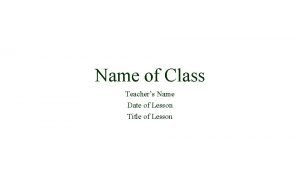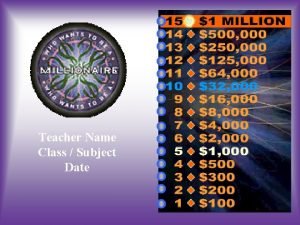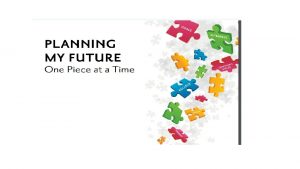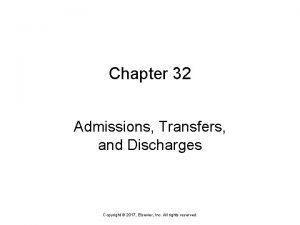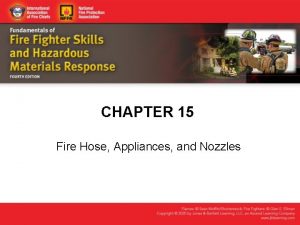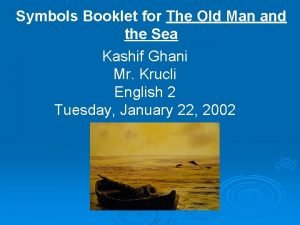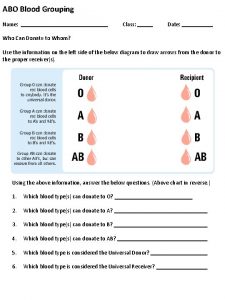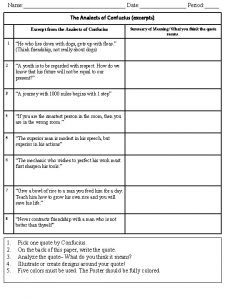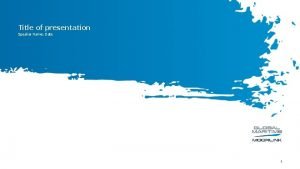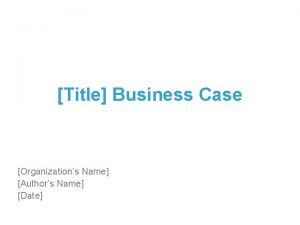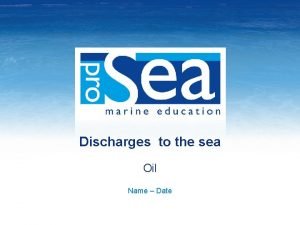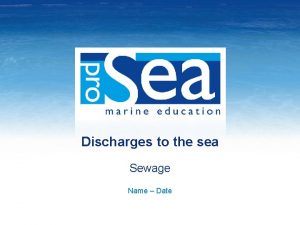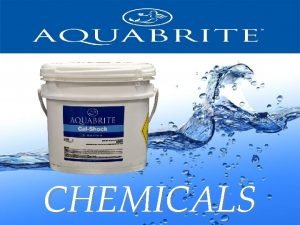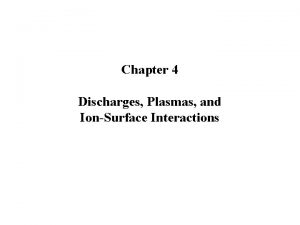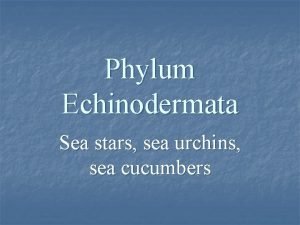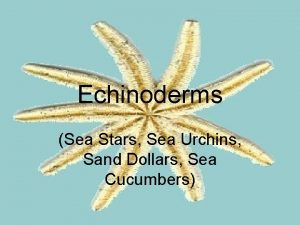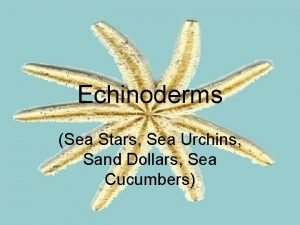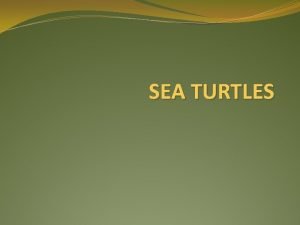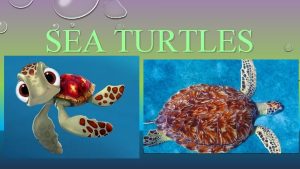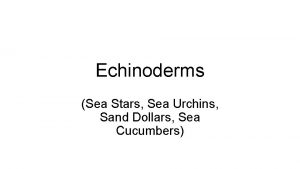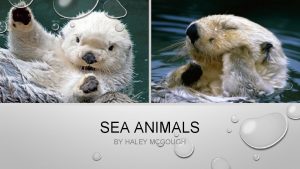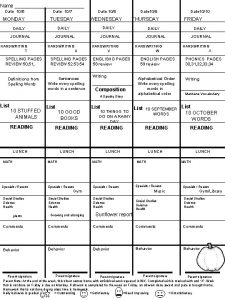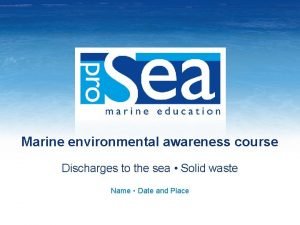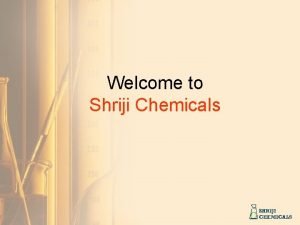Discharges to the sea Chemicals Name Date Discharges



















- Slides: 19

Discharges to the sea Chemicals Name – Date

Discharges to the sea - Chemicals Contents 1. Introduction 2. Hazardous and Noxious Substances 3. Fate and behavior in the environment 4. Judging the effects 5. Role of shipping 6. Solutions 2 Photo credits: WOCB/Green Award Foundation

1. Introduction § § Chemicals are everywhere, naturally or manmade Chemicals are transported by ship, in bulk and in packaged form Photo credits: WOCB

Top 10 chemicals transported by ships Volumes of chemicals transported are increasing, but remain significantly lower than seaborne trade in oil Illustration credits: ITOPF

§ Chemicals can be beneficial, but some are created to cause harm During transport, chemicals may enter the marine environment § Knowledge about emissions and effects limited § Photo credits: www. beeldbankvenw. nl, Rijkswaterstaat

io x o N 2. Hazardous and Noxious substances es c n ta s s e c n a t s b b u s s u u o ard z s a H s u Da Har mfu ng er l su • • • ou ss bst ub sta nc anc es es Physical hazards (e. g. explosive) Health hazards Environmental hazards

3. Fate and behavior in the environment • Evaporators • Floaters • Dissolvers • Sinkers Illustration credits: ITOPF - Photo credits: WOCB

Bioaccumulation can significantly increase the negative effect of a toxic compound. (biomagnification) 8 Illustration credits: Pro. Sea

Bioaccumulation protein fat water Bio. Accumulation. Factor = 7 9 Illustration credits: NIOZ Cees Booij

Accumulation in marine mammals Excretion plankton Ingestion fish marinemammal 10 Illustration credits: NIOZ Cees Booij

4. Judging the effects The effects of a chemical depend on: § § § § the amount spilled the site of the spillage the physical properties the toxicity of the chemical the sensitivity of organisms / individuals the bioaccumulation factor degredation rate (persistence) Photo credits: QNR Terry Ross

Effects - Toxic effects on marine life Human health effects Economic effects (fisheries, tourism) Photo credits: Ecomare / NOAA Fisheries

Toxicity dose acute chronic effect time disorder/nausea coma death shorter life span reduced reproduction success cancer 13

Measuring acute toxicity 0% 25 % Low concentration Test: fish, shellfish, algae 50 % 75 % 100 % High concentration - NOEC - Acute Toxicity LC 50 Illustration credits: Royal Netherlands Institute for Sea Research, NIOZ, Cees Booij

TBT: one of the most toxic chemicals ever deliberately released in the marine environment - Acute and chronic toxic effects Highly persistent Bioaccumulating Illustration credits: unknown

5. The role of shipping § § § Loss of containers Accidental chemical spills (occur much less than oil spills) Operational discharges Photo credits: WOCB

6. Solutions Regulations MARPOL Annex II: Noxious liquid bulk chemicals Annex III: Harmful substances in packaged form § § Compound (category, amount, concentration) Location (water depth, distance from coast) Ship (speed, year of construction) Book keeping

A 1 Bioaccumulation A 2 Biodegradation 4 NR 4 4 B 1 Acute Toxicity B 2 Chronic Toxicity D 3 Health Effects E 2 Wildlife, Habitats 5 X 4 X NR CMRTNI X 4 Y 3 Y 2 Y NR Not 0 Y 1 Y Fp, F, S CMRTNI R 0 0 Y Y everything not X, Y, or OS 2 Category Z - not Fp, F, S OS Photo credits: Pro. Sea

Technical solutions such as efficient stripping Photo credits: Mar. Flex BV
 Specialty chemicals vs commodity chemicals
Specialty chemicals vs commodity chemicals Name class date
Name class date Name class subject design
Name class subject design Name class date
Name class date Chapter 32 admissions transfers and discharges
Chapter 32 admissions transfers and discharges What is hard suction hose most commonly used for
What is hard suction hose most commonly used for Record date ex dividend date
Record date ex dividend date What is the dividend
What is the dividend Name a point that is collinear with the given points
Name a point that is collinear with the given points Ionian sea vs aegean sea
Ionian sea vs aegean sea Yellow sea and east china sea
Yellow sea and east china sea Sea anemone jellyfish
Sea anemone jellyfish Marlin symbolism
Marlin symbolism Sea stump
Sea stump Name class date
Name class date By name title date
By name title date Name date period
Name date period By name title date
By name title date Name title date
Name title date Dystopian title ideas
Dystopian title ideas

